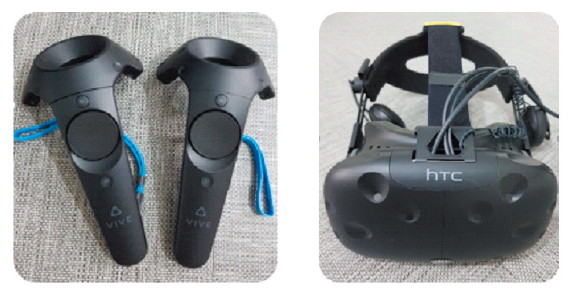Abstract
Objectives: This study was conducted to verify the effectiveness of the VR-applied head and neck anatomy class and to be used as basic data for the development of a teaching method using VR in the basic dental hygiene field. Methods: A convenience sample was extracted from 128 students and graduates who completed the head and neck anatomy class at the department of dental hygiene at a university in Gwangju. From June 1 to July 31, 2021, an online survey was conducted on class attitude and satisfaction, and statistical analysis was performed using frequency analysis and independent sample t-test. Results: Class attitude (3.79), interest (3.64), attention (3.88), learning motivation (3.80), and achievement motivation (3.84) were all high in the head and neck anatomy VR application group (
Figures & Tables

Fig. 1. VR headset & controller


